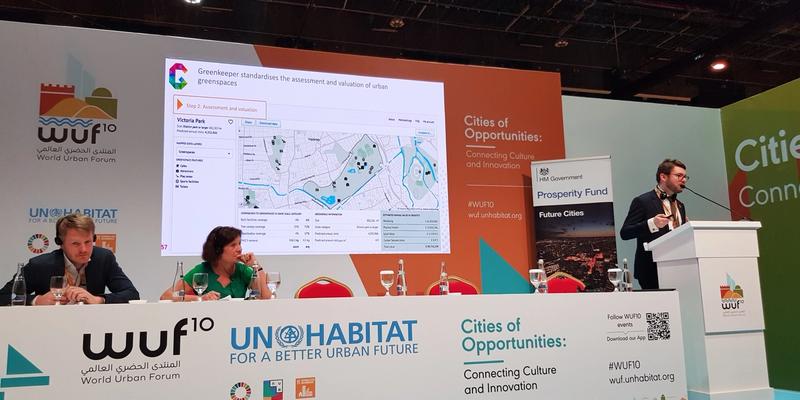Victoria Park is estimated to be worth almost £99M a year for its contribution to local health and for carbon storage.
It's a claim made at the United Nation's World Urban Forum in February 2020 in Abu Dhabi (pictured) and is typical of the statistics now frequently used to argue for greater protection and investment in local parks and public spaces, as councils struggle to find savings in stretched budgets.
It has been estimated that UK parks, open spaces and the natural environment save the Exchequer around £111 million per year; just on reduced GP visits. Aggregated across the UK an estimated £34.2 billion worth of wellbeing benefits per year are delivered by frequent use of parks and green spaces (Fields in Trust: Revaluing Parks and Green Spaces 2018).
There's an argument that this economic value being placed on parks detracts from the overall value and purpose of them as places for leisure and nature. However, there is little doubt that there are real health benefits for those who have access to our parks, which should be everyone.
A wealth of research with strong evidence links being in nature, even a short stroll around trees, with improvements in an individual's mental and physical health. Hospital studies established that patients recover faster if they can even just see greenspace from their ward beds!
A study for the GLA, called Natural Capital, found parks offer remarkable value, with every £1 spent by local authorities on parks delivering a return for Londoners of an estimated £27 in value on the investment. With these sums, it's hard to understand why parks aren't much better funded.



